Summary of climate disasters on the planet, October 22-28, 2025
The last week of October became one of the most destructive of the year. A Category 5 tropical hurricane, Melissa, raged across the Caribbean.
Over three days, the planet was shaken by 6 earthquakes of magnitude 6.0 and above, and the rainfall in Vietnam nearly broke a historic global record.
More details are provided below in the summary of past week’s climate events, from October 22 to 28, 2025.
We will also respond today to a comment that appears under almost every news report.
Tropical Hurricane Melissa
On the morning of October 28, the tropical hurricane Melissa, reaching Category 5, with winds of almost 300 km/h (186 mph) struck the coast of Jamaica near the town of New Hope. It became the most powerful storm in the entire 174-year history of observations in the region.
Branches and debris were flying through the air, buildings lost their roofs, and streets turned into raging torrents.

Destruction and chaos on the streets after Tropical Hurricane Melissa in Jamaica
A storm surge flooded the streets of the historic port of Black River. The entire parish of Saint Elizabeth — the country’s key agricultural center — was almost completely underwater. Several families were cut off from the outside world, and rescuers could not reach them.
The destructive wall of the hurricane also passed over Montego Bay — the third largest city and the country’s main tourist hub. Hotels were flooded — water poured from the ceilings like a waterfall.
More than 77% of the island’s population — 540,000 people — were left without electricity and communication.
Around 15,000 people took refuge in shelters.
The entire territory of Jamaica was declared a disaster area. Local residents described the scene as something out of a disaster movie: palm trees snapped like matchsticks, washed-out roads, and houses standing in water up to their windows.
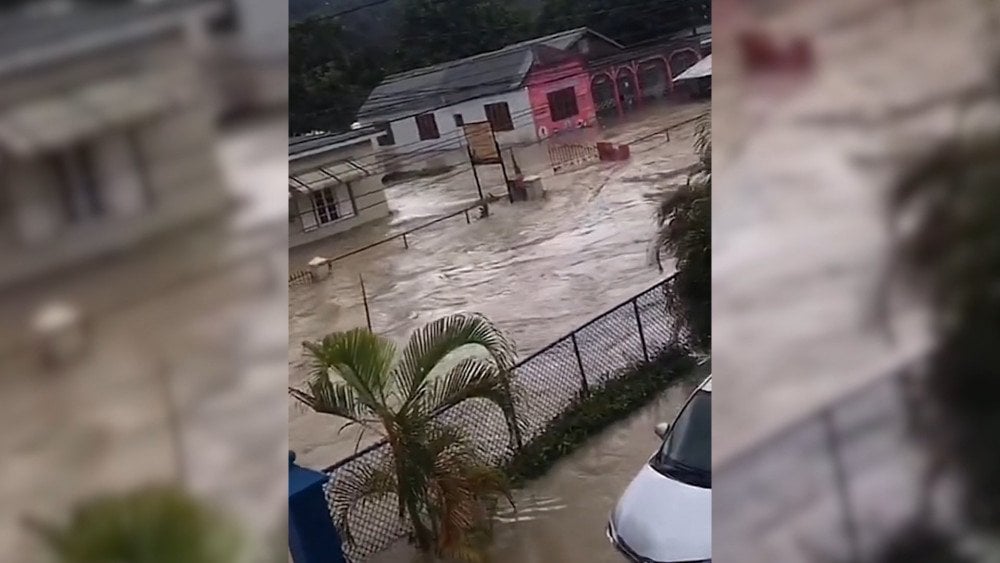
Rains caused by Tropical Hurricane Melissa flooded residential areas in Jamaica
As of October 31, the disaster had claimed 19 lives in Jamaica.
The second country to be hit directly by the hurricane was Cuba. It brought heavy rainfall and a storm surge. More than 735,000 people were evacuated preemptively, especially from low-lying and coastal areas. There were cases of flooding, damage to roofs, and power lines.
Hurricane Melissa also affected other countries of the Caribbean Basin, leaving chaos and casualties in its wake.
In Haiti, it unleashed torrential rains and violent wind gusts.

A road collapse in Haiti after sudden flooding caused by Hurricane Melissa
In the city of Petit-Goâve, an overflowing river flooded homes and bridges. According to official data as of October 31, at least 30 people died in the country, and some are reported missing.
Flooding and landslides destroyed roads, leaving many villages inaccessible to rescuers. Haiti’s authorities called the situation a “national disaster.”
In the Dominican Republic, one person died and another went missing. Due to water-supply system failures caused by the rampaging hurricane, at least 1,270,000 residents were left without access to fresh water.

Hurricane Melissa caused catastrophic flooding in the Dominican Republic
Melissa became one of the most powerful hurricanes in the Atlantic in the entire history of observations.
Turkey
On October 27 late in the evening, at 22:48 LT, the Sındırgı district of Balıkesir Province was shaken by a powerful earthquake with a magnitude of 6.1. Its hypocenter was located at a depth of only 5.99 km (3.7 mi).
The tremors were felt not only in nearby provinces — İzmir, Istanbul, Bursa, Tekirdağ, Kocaeli, and Sakarya — but also in neighboring countries: Bulgaria, Greece, North Macedonia, and Cyprus.
Despite the power of the earthquake and the shallow depth of the hypocenter, no casualties or large-scale damage were reported. In Balıkesir, four buildings collapsed, three of which had already been severely damaged during a previous seismic event. According to Turkey’s Disaster and Emergency Management Authority (AFAD), 26 people sustained injuries of varying severity.
In Manisa province, 42 residents sought medical attention. The earthquake damaged 83 buildings in nine districts.
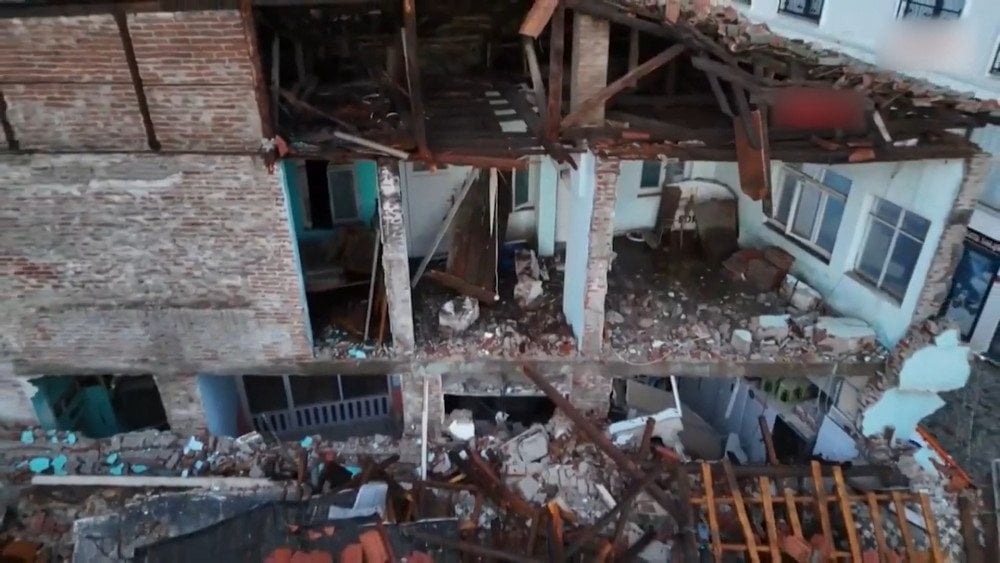
A collapsed building after the strong M6.1 earthquake in Balıkesir Province, Turkey
The main shock was followed by a seismic swarm: from night until noon on October 28, about 500 aftershocks were recorded, 12 of them exceeding magnitude 4.0. The strongest aftershock reached magnitude 4.8.
Authorities organized temporary accommodation for residents in outdoor tents, as many were afraid to return to their homes, fearing new earthquakes. Heavy rain hampered rescue efforts and disrupted people’s daily life. Some people who had taken shelter in pavilions and cafés rushed back out into the streets when the aftershocks hit, despite the pouring rain.
According to seismologists, around 12,000 seismic events have been recorded in the region over the past three months, and their number continues to grow — which is unusual for this area.
It is worth noting that this week, in just 3 days, 6 earthquakes of magnitude 6.0 and above occurred in different parts of the planet.

In just three days, six earthquakes of magnitude 6.0 and above occurred worldwide
Argentina
On October 25, a storm with heavy rains hit Buenos Aires, the capital of Argentina, and its surroundings. Some areas received more than a month's worth of rainfall — up to 155 mm (6.1 in), most of it in just two hours. The average monthly rainfall in October in Buenos Aires is 122.9 mm (4.8 in).
Traffic was paralyzed on several key highways: the Pan-American Highway, Avenida General Paz, and the Buenos Aires–La Plata Highway. In some sections, cars were submerged up to their roofs. Suburban train service was also disrupted.
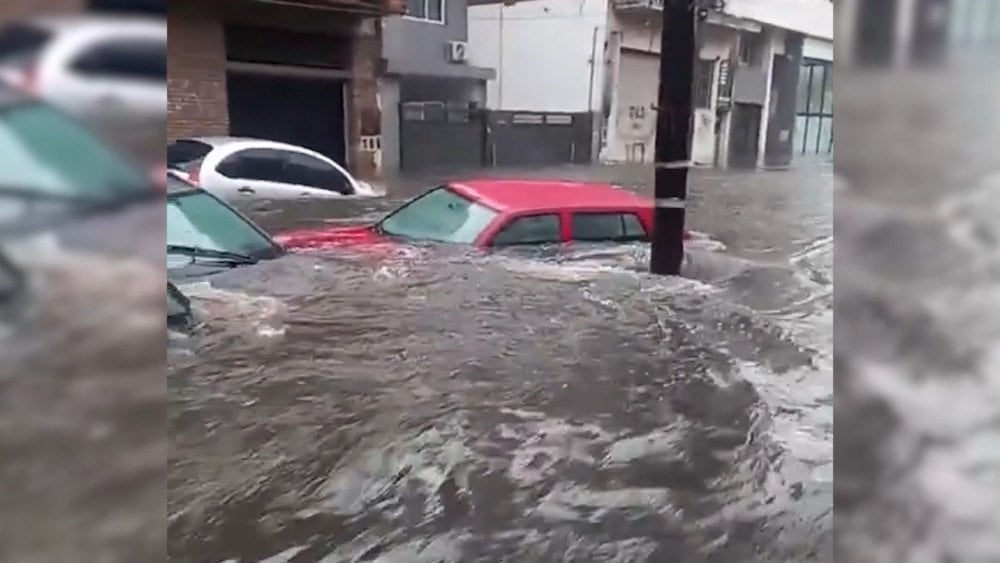
Buenos Aires after the record-breaking downpour: cars went underwater, Argentina
The water level in the Medrano Stream, which flows into the Río de la Plata, increased almost 2.5 times and exceeded 5 m (16.4 ft), becoming the main cause of the flooding. Streets turned into rivers — people were forced to move through waist-deep water.
The power outage affected approximately 45,000 residents in the metropolitan region.
Historical data shows that such an extreme amount of rainfall in October is an exceptionally rare event for Buenos Aires. Since observations began in 1906, this is only the third time when more than 100 mm (3.9 in) of rain has fallen in a single day in October: on October 23, 1944 — 109 mm (4.3 in), on October 28, 2014 — 132 mm (5.2 in), and on October 25, 2025 — 123 mm (4.8 in).
Storm Benjamin
Since October 23, Storm Benjamin has swept across Europe, bringing hurricane-force winds, torrential rains, and flooding. Seven countries — Switzerland, Belgium, France, the United Kingdom, the Netherlands, Spain, and Portugal — declared an orange level of danger.
The storm disrupted road, rail, ferry, and air transport. Within 24 hours, major airlines cancelled more than 260 flights, and over 870 were delayed. Thousands of passengers were stranded at airports in London, Amsterdam, Paris, Dublin, and Frankfurt.
France was hit hardest. Hurricane-force winds raged along the coasts of the English Channel and the Atlantic, and on the island of Corsica, in the commune of Cagnano, according to Météo France, wind speeds reached 168 km/h (104 mph).
Waves in the Bay of Biscay exceeded 14 m (46 ft). Falling trees injured 7 people in different regions.

Storm Benjamin in France: strong winds brought down trees and damaged buildings
A total of 140,000 households were left without electricity. In Paris and its suburbs, parks and gardens were temporarily closed. In Corrèze, 120 mm (4.7 in) of rainfall fell in 48 hours, and in Cantal, 109.5 mm (4.3 in) fell in just 24 hours.
A man died tragically in Corsica: he was swept away by a powerful current while swimming with his family in the Fango River. The water rose so quickly that it took them by surprise. Fortunately, his wife and two children were rescued.
In Suffolk County, United Kingdom, more than 2,000 homes were left without electricity, and winds of up to 120 km/h (75 mph) brought down trees onto railway tracks.
In the Netherlands, squalls and heavy rain caused massive traffic jams: during peak hours, the total length of road congestion exceeded 900 km (559 miles). High-speed train service was also suspended.
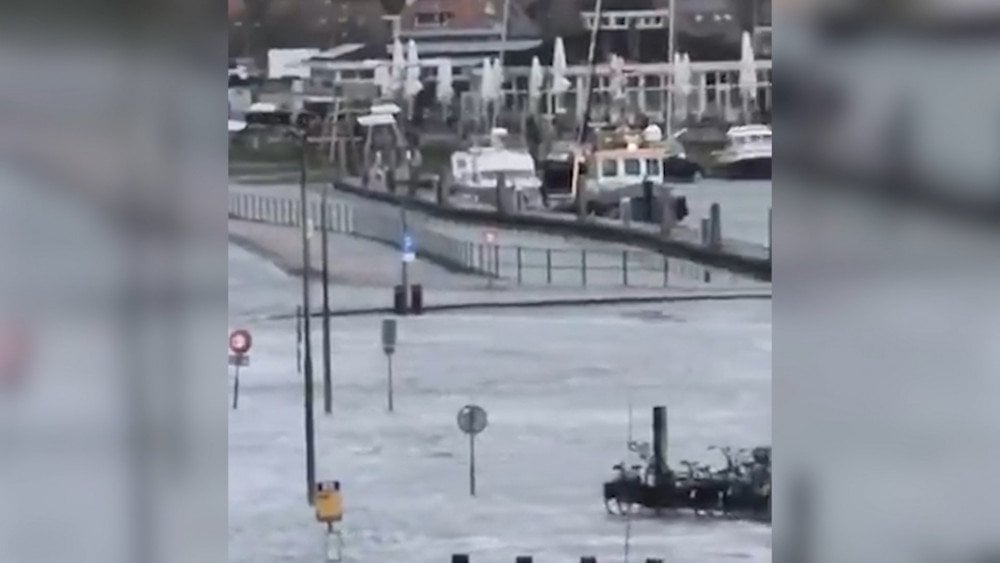
Flooded waterfront in the Netherlands after Storm Benjamin
In Switzerland, a shipping company cancelled all services on Lake Geneva. A strong gust of wind overturned a trailer near the city of St. Gallen, blocking traffic on the A13 National Motorway for two hours.
In Spain, firefighters responded to more than 600 incidents: the wind broke trees and damaged buildings. Twenty-six people were injured, 11 of them hospitalized.
In the province of Tarragona, the storm caused yet another tragedy: a man was swept away by powerful waves and drowned.
New Zealand
On October 23, for the second time in a week, extremely powerful winds struck New Zealand, bringing destruction and chaos. The main impact hit the capital city, Wellington, as well as parts of the South Island. In some areas, wind speeds reached 230 km/h (143 mph).
Several affected regions were placed under the highest — red — danger level, which is extremely rare. And in Canterbury, the country’s largest region, a state of emergency was declared.
The wind brought down trees and tore roofs off buildings. Tens of thousands of homes lost power, more than 200 flights were cancelled, and several highways were closed.
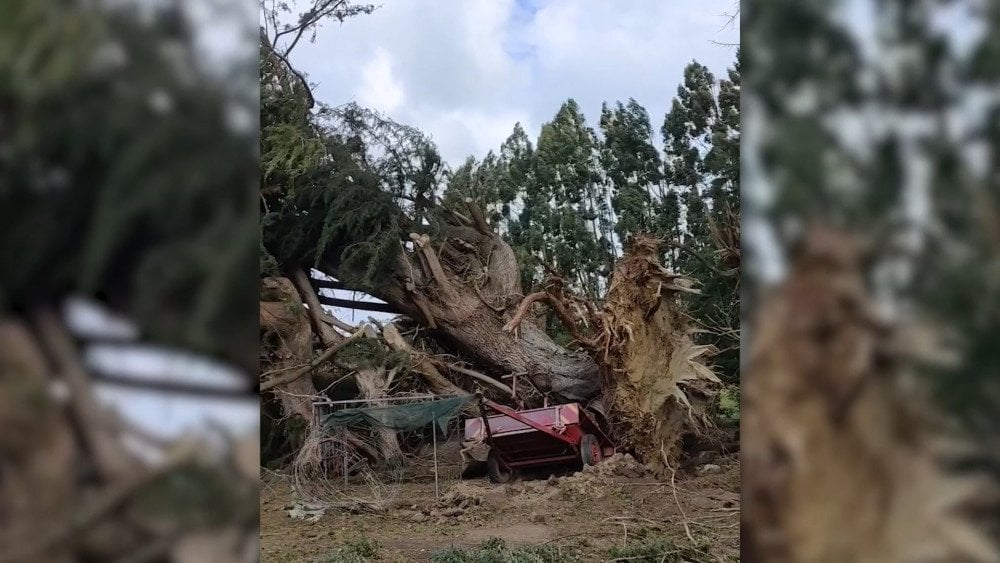
A powerful storm in New Zealand brought down trees
The strong wind also contributed to the outbreak of wildfires and made firefighting efforts extremely difficult.
USA
During the night of October 25, severe thunderstorms struck the Dallas–Fort Worth area — a major metropolitan region in northern Texas. Wind gusts reached 108 km/h (67 mph).
Radar detected a possible tornado. However, later experts determined that the observed destruction was more typical of straight-line winds reaching up to 135 km/h (84 mph).
The storm was accompanied by hundreds of lightning strikes. Several bolts hit residential buildings, causing six fires in Dallas and Denton counties. At Dallas–Fort Worth International Airport, 79 mm (3.1 in) of rainfall fell in 24 hours — the highest October total in 25 years.
By morning, the storm front reached Houston, Texas’s largest city, leaving around 260,000 people without power.
Already by the evening of October 26, the same atmospheric system brought catastrophic downpours to the state of Florida.

Torrential rains turned roads into rivers, Florida, USA
Dozens of roads and residential neighborhoods were submerged. One of the state’s key highways, near the city of Sanford, was completely flooded.
The National Weather Service declared a rare flash-flood emergency for this region.
In the city of Eustis, Lake County, up to 500.4 mm (19.7 in) of rain fell in 24 hours (while the average monthly norm for October is 64.6 mm / 2.5 in), which is comparable to rainfall levels during Tropical Hurricane Ian — one of the most destructive storms in U.S. history (September 2022).

Flooding in Florida: a building submerged after record rainfall, USA
In the cities of Mount Dora and Eustis, water damaged roads and utility infrastructure; in some areas, residents were strongly advised to boil water before consumption. And near Eustis, two sinkholes emerged, likely caused by soil erosion.
Vietnam
Last week, Central Vietnam faced a catastrophic flood after record-breaking rainfall. In the city of Huế, the former imperial capital known for its historical landmarks and UNESCO World Heritage sites, from 19:00 on October 26 to 19:00 on October 27, the Bạch Mã peak recorded 1,739 mm (68.5 in) of rainfall in 24 hours. This is the second-highest value in the world in the entire history of meteorological observations. The highest ever — 1,825 mm (71.9 in) — was recorded in January 1966 at a French weather station in the Indian Ocean.

Catastrophic flooding in Vietnam: the historic city of Huế completely submerged
The disaster claimed 10 lives, and another 5 people remain missing.
Cities across Central Vietnam were nearly paralyzed. In Huế and Đà Nẵng, dozens of districts were submerged, with water levels reaching up to 4 m (13 ft) in some areas. Residential neighborhoods were flooded, roads destroyed, and bridges damaged. In the commune of Trà Tân, 30 landslides occurred, destroying 11 homes.
To prevent critical railway bridges Bạch Hổ and Dã Viên over the Hương River from being washed away by floodwaters, two trains loaded with stones, with a total weight of more than 1,100 tons, were positioned on them as ballast.
The scale of destruction is enormous: more than 65,000 households were underwater, farmland was destroyed, and several thousand livestock perished. Rescue operations were conducted under incessant heavy rains.

Evacuation of people from severely flooded areas after record rainfall in Vietnam
Very often in the comments under our news reports, viewers write that “nothing is happening with the climate, everything is the same as before: it rained before, and earthquakes also occurred in the past.”
We are sincerely happy for those who have not yet been affected by a climate disaster. But, as the saying goes, it’s better to learn from somebody else’s mistakes.
We can only share information with you and offer three steps for your safety — and then it’s up to you whether to listen or not.
The first step is to read what people who have survived a natural disaster say in any news report. Try to put yourself in their place. Can you imagine your house becoming completely flooded in a matter of minutes — or being torn apart by a tornado that has never occurred in your region before?
The first thing all survivors say is: “We did not expect this to happen.” Suddenness is the key factor. This means people were not warned; and most importantly, natural disasters develop very rapidly and are becoming increasingly destructive.
Moreover, many people do not know how to act in such situations — because they have not studied this issue and thought it would not affect them.
Another point all disaster survivors mention is that afterwards they’re left one-on-one with their misfortune: nowhere to live, nothing to eat, and no clean drinking water.
Yes, rescuers do everything possible — but their technical and human resources are extremely limited.
We must understand: saving our lives is OUR responsibility!
The second step is to understand what is really happening with the climate. Thanks to the efforts of the international group of scientists ALLATRA, the true causes of climate disasters and ways to prevent them have been identified. You can study these interdisciplinary findings yourself — all information is publicly available and presented in simple, understandable language. Knowledge removes fear and motivates action!
And the third step is to urgently inform everyone on the planet about the rapidly escalating climate crisis.
There are already thousands of dedicated volunteers who share this information across social networks.
Today, all of humanity must raise the issue of climate change as a united voice and demand the creation of an international scientific center to study and solve this problem—especially with regard to micro- and nanoplastics, as we discussed in previous reports.
Society must create demand so that the best scientists can find solutions.
We must act now. And the simplest thing anyone can do is to stop being silent.
Watch the video version of this article here:
Leave a comment